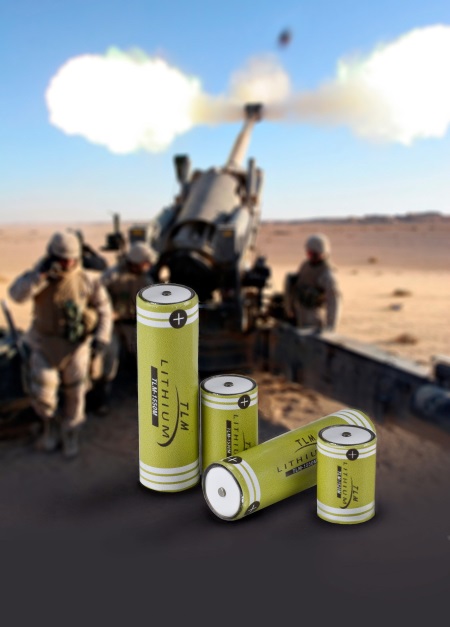BY SOL JACOBS, VP Operations,
Tadiran Batteries,
www.tadiranbatteries.com
Believing that smaller is better, design engineers “want their cake and eat it too” by packing increased amounts of product functionality into ever shrinking footprints. Miniaturized power solutions are inherently complex, often involving various compromises based on contradictory performance requirements. While this conundrum applies to both rechargeable and primary batteries technologies, these issues are more commonly manifested with industrial grade devices than with consumer electronics.
The smart phone offers a prime example. This ubiquitous product has been miniaturized through the use of rechargeable lithium polymer batteries, which are constructed from a thin, flexible material. The smart phone’s energy demands are relatively benign. These devices are also typically replaced every 2 to 3 years, and are not intended for extreme environments, so a consumer grade rechargeable battery that can operate for 5 years and up to 1,000 recharge cycles may be sufficient.
In many cases, large battery packs are designed-in to supply short bursts of energy. Unfortunately, these larger, less efficient, cells often have too much capacity but not enough power to deliver high pulses of energy.
On the opposite side of the spectrum, certain high reliability applications, including mil/aero, medical, and safety/security devices, require a more ruggedly constructed battery. This led to the development of TLI series Lithium-ion (Li-ion) batteries, the first rechargeable cell capable of offering up to 20-year service life and 5,000 full recharge cycles. These powerful little cells can provide up to 15 A pulses from an AA-sized cell, and can be used and recharged at extreme temperatures (-40° to 85°C). They’re also constructed with a glass-to-metal hermetic seal to resist leakage and corrosion.
Small, energetic primary Li battery
If the application demands a primary lithium battery, then the choice of power supply can be more complicated, especially if the application requires high pulses, high continuous current, and a small form factor.
For example, numerous single-use mil/aero applications can benefit from a high-power lithium metal oxide battery, the TLM series, which outperforms legacy battery technologies by delivering higher capacity, higher energy density, long-term reliability, instantaneous activation, and COTS-related cost savings. These applications include ordinance fuses, missile systems, telemetry, electronic warfare systems, smart munitions.
Constructed with a carbon-based anode, a multi metal oxide cathode, and an organic electrolyte, TLM series batteries can deliver up to 20-year operating life with an annual self-discharge rate of

Similarly, an air-to-ground missile that was previously powered by a battery pack consisting of 19 silver-zinc cells can be converted to a battery pack consisting of 24 high-power lithium metal oxide cells, resulting in a 30% size reduction and a 75% weight reduction (2.2 kg vs. 0.5 kg), as well as 3.5 times greater energy density. Use of a TLM lithium metal oxide battery pack further saved space by eliminating the need for a squib, gas generator, and heater required by an equivalent silver-zinc battery pack.
A lighter surgical drill
The TLM series lithium metal oxide batteries are also ideal for powering surgical screwdrivers and power tools that require fast activation, high rate power, and a small form factor. Many of these handheld medical devices were originally powered by alkaline batteries, which are bulky and short-lived. Older generation consumer grade rechargeable batteries did not offer a useful alternative as they suffered from low energy density.
For bio-access, a surgical device manufacturer found that lithium batteries with an optional power supply upgrade for their surgical drill worked better than the previously all alkaline battery pack. The alkaline batteries performed well and offered excellent reliability, but added unnecessary weight. By substituting 6 AA-size TLM-1550HP batteries for the alkaline battery pack, BioAccess achieved a 36% weight reduction, with 80% greater energy density, and higher capacity. An equivalent alkaline battery pack would have required 3X the weight and 2.5X the volume (15 AA-size alkaline batteries vs. 6 AA-size TLM-1550-HP batteries). The battery pack also enabled the drill to deliver faster drilling speeds, more active drill time (30 to 40 s at a time for up to 20 to 30 cycles), more instantaneous power, and greater stall torque, resulting in more efficient drilling cycles with less operator fatigue. These case histories are applicable to a wide range of industrial devices that can be miniaturized through the use of small, energy-packed rechargeable and primary lithium batteries.
Advertisement
Learn more about Tadiran





